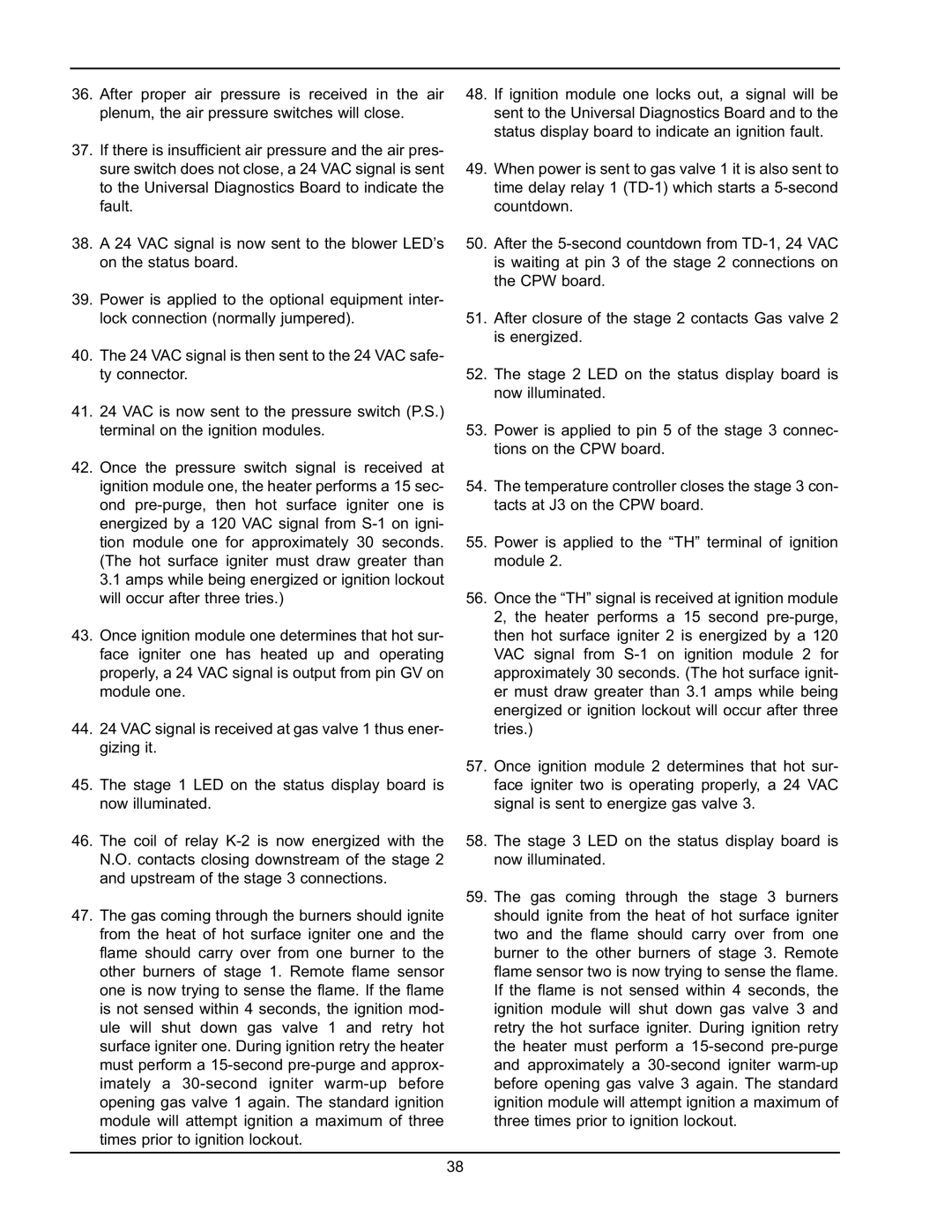
36.After proper air pressure is received in the air plenum, the air pressure switches will close.
37.If there is insufficient air pressure and the air pres- sure switch does not close, a 24 VAC signal is sent to the Universal Diagnostics Board to indicate the fault.
38.A 24 VAC signal is now sent to the blower LED’s on the status board.
39.Power is applied to the optional equipment inter- lock connection (normally jumpered).
40.The 24 VAC signal is then sent to the 24 VAC safe- ty connector.
41.24 VAC is now sent to the pressure switch (P.S.) terminal on the ignition modules.
42.Once the pressure switch signal is received at ignition module one, the heater performs a 15 sec- ond
43.Once ignition module one determines that hot sur- face igniter one has heated up and operating properly, a 24 VAC signal is output from pin GV on module one.
44.24 VAC signal is received at gas valve 1 thus ener- gizing it.
45.The stage 1 LED on the status display board is now illuminated.
46.The coil of relay
47.The gas coming through the burners should ignite from the heat of hot surface igniter one and the flame should carry over from one burner to the other burners of stage 1. Remote flame sensor one is now trying to sense the flame. If the flame is not sensed within 4 seconds, the ignition mod- ule will shut down gas valve 1 and retry hot surface igniter one. During ignition retry the heater must perform a
48.If ignition module one locks out, a signal will be sent to the Universal Diagnostics Board and to the status display board to indicate an ignition fault.
49.When power is sent to gas valve 1 it is also sent to time delay relay 1
50.After the
51.After closure of the stage 2 contacts Gas valve 2 is energized.
52.The stage 2 LED on the status display board is now illuminated.
53.Power is applied to pin 5 of the stage 3 connec- tions on the CPW board.
54.The temperature controller closes the stage 3 con- tacts at J3 on the CPW board.
55.Power is applied to the “TH” terminal of ignition module 2.
56.Once the “TH” signal is received at ignition module 2, the heater performs a 15 second
57.Once ignition module 2 determines that hot sur- face igniter two is operating properly, a 24 VAC signal is sent to energize gas valve 3.
58.The stage 3 LED on the status display board is now illuminated.
59.The gas coming through the stage 3 burners should ignite from the heat of hot surface igniter two and the flame should carry over from one burner to the other burners of stage 3. Remote flame sensor two is now trying to sense the flame. If the flame is not sensed within 4 seconds, the ignition module will shut down gas valve 3 and retry the hot surface igniter. During ignition retry the heater must perform a
38
